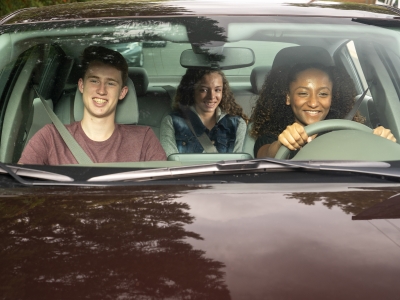How to Get a First-Time Driver License in Texas
by Courtney Conley Getting your first driver license is an exciting milestone, but in the Lone Star State, the process involves several specific steps depending on your age. Texas utilizes a Graduated Driver License (GDL) program for teens to ensure new motorists gain experience in a controlled manner before they are given full driving privileges. Whether you’re a teenager eager to get on the road, or an adult starting for the first time, understanding the requirements from the Texas Department of Public Safety (DPS) is the best way to ensure a smooth application process and avoid multiple trips to the driver license office.

Navigating the application process can feel overwhelming, but it essentially boils down to education, documentation, and testing. Here is a detailed checklist of how to get a first-time driver license in Texas:
- Complete a Driver Education Course. If you are between the ages of 15 and 24, you are required by law to complete a state-approved driver education course. For teenagers, one of the most popular options is Parent-Taught Driver Education (PTDE). This allows a parent or guardian to act as the instructor, providing a comfortable learning environment. Alternatively, students can choose the Alternative Method of Instruction (AMI) course. This is an "Instructor-Led" online option where the 32-hour classroom portion is delivered entirely online. Adults (18-24) must complete a shorter 6-hour adult driver education course, which covers essential Texas traffic laws and road safety.
- Apply for a Learner License. For those under 18, you must hold a learner license for at least six months, or until you turn 18, before you can apply for your provisional license. This phase is critical, as it allows you to practice driving with a licensed adult who is at least 21 years old and has at least one year of driving experience. This "behind-the-wheel" time is where you develop the instincts necessary to handle Texas highways safely.
- Finish the Impact Texas Drivers (ITD) Program. Every new driver in Texas, regardless of age, must watch a free distracted driving video provided by the DPS. Teens watch a 2-hour video (Impact Texas Teen Drivers), while adults watch a 1-hour version (Impact Texas Adult Drivers). This must be completed after your drivers ed course but before your driving test. Note: The certificate you receive is only valid for 90 days, so time this carefully with your scheduled driving appointment.
- Gather Your Documents. When you head to the DPS, you’ll need a stack of original paperwork. This includes proof of U.S. Citizenship (or Lawful Presence), your Social Security number, and two documents proving Texas residency (like a utility bill or bank statement). If you’re under 18, you also need a Verification of Enrollment (VOE) form from your school to prove you are attending classes and making progress toward graduation.
- Pass the Required Tests. To earn your license, you must prove your competency through a vision exam, a written knowledge test (which is often included in your drivers ed course), and the final behind-the-wheel driving skills test. You can schedule the driving test at a DPS location or through a third-party provider that is state-authorized.
Texas DPS Approval
Before you can walk out with your license, you must receive Texas DPS approval. This involves a formal in-person appointment where an agent will meticulously verify your original documents--remember, photocopies are not accepted! During this visit, they will take your thumbprints and capture your official license photo. If you chose the parent-taught route, the agent will also verify your PTDE program guide and logs. Once the agent confirms that you’ve met all legal requirements and passed your exams, you will receive a temporary paper permit. Your official license will arrive in the mail within two to three weeks, officially marking the start of your journey as a licensed Texas driver.
Interested in learning more about traffic safety?
Are you looking for defensive driving and traffic school courses? Do you want a discount on your auto insurance? Do you know a teen who’s ready to take an online driver education course?
Safe2Drive is here to help! We offer convenient online courses for drivers of any age! Visit our website today to learn about the online courses we offer in your state.
Getting your first driver license is an exciting milestone, but in the Lone Star State, the process involves several specific steps depending on your age. Texas utilizes a Graduated Driver License (GDL) program for teens to ensure new motorists gain experience in a controlled manner before they are given full driving privileges. Whether you’re a teenager eager to get on the road, or an adult starting for the first time, understanding the requirements from the Texas Department of Public Safety (DPS) is the best way to ensure a smooth application process and avoid multiple trips to the driver license office.